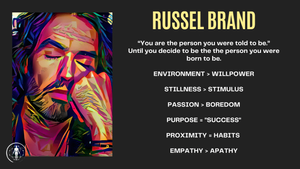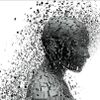The Cage We've Built Around Ourselves
Have you ever wondered why it feels so difficult to break free from habits that don't serve you? Why despite knowing better, you find yourself trapped in cycles of stress, disconnection, and burnout?
What if I told you that your environment—not your willpower—might be the real problem?
The story of transformation isn't about trying harder. It's about creating spaces where healing happens naturally. This is precisely why I wrote the SelfCare Book—to help you redesign your environment in ways that naturally support your wellbeing.
The 3 Major Challenges We're Here to Solve Together
- Environmental Addiction: How the spaces we inhabit can keep us stuck in patterns of disconnection and unfulfillment
- The Myth of Chemical Hooks: Why what we've been taught about addiction might be fundamentally wrong
- The Isolation Epidemic: How our disconnected modern lifestyle creates the perfect conditions for burnout and emptiness
Would you be curious to know what happens when we address these challenges together? That's exactly what our SelfCare Community is designed for—creating a human "Rat Park" where transformation happens naturally.
The SelfCare Framework: Learn-Do-Embody-Teach
1. LEARN: Understanding Your Environment's Impact
Russell Brand knows a lot about addiction. His journey through alcohol, drugs, and other dependencies taught him something profound: addiction isn't just about substances—it's about disconnection.
As Brand discovered, "You are the person you were told to be." Our environments shape us in ways we rarely recognize. We develop habits not because we're weak, but because our surroundings make those habits the path of least resistance.
2. DO: Creating Your Own "Rat Park"
In the 1970s, Professor Bruce Alexander conducted a revolutionary experiment. He placed rats in two different environments: an isolated cage with drugged water, and a "Rat Park"—a heaven for rats with friends, activities, and connection.
The isolated rats consistently chose the drugged water, while the Rat Park rats—even those previously addicted—chose clean water instead. They preferred to engage with life rather than escape it.
What if your burnout, stress, and disconnection isn't about personal failure? What if it's simply a natural response to living in the wrong environment?
May I ask—what would your personal "Rat Park" look like? What environment would naturally support your wellbeing rather than your disconnection?
The SelfCare Book offers a blueprint for designing these nourishing spaces in your life. Grab a copy here to discover how.
3. EMBODY: From Self-Harm to Self-Mastery
Remember: Self-Harm happens when your rate of degeneration exceeds your rate of regeneration. SelfCare occurs when these rates are equal. Self-Mastery emerges when your regeneration outpaces degeneration.
This isn't just philosophy—it's biology. Research shows that four simple lifestyle factors can cut chronic disease risk by a staggering 78%:
- Not smoking
- Maintaining a healthy weight
- Moving your body for 30 minutes daily
- Eating more plants
These aren't just habits—they're environmental designs that naturally move you toward wellbeing.
4. TEACH: Spreading Ripples of Transformation
Johann Hari suggests we shouldn't even call it addiction. Perhaps we should call it bonding. Human beings have a natural and innate need to bond and connect.
When we're happy and healthy, we bond with people and purpose. But when we're isolated, stressed or disconnected, we bond with whatever provides relief—whether that's social media, work, or substances.
Would you be open to exploring how your environment either supports connection or drives disconnection? This question lies at the heart of the transformation journey we share in our SelfCare Community.
Your Next Step: Creating Your Personal Rat Park
What if reversing burnout, fatigue, and disconnection wasn't about trying harder, but about designing spaces where healing happens naturally?
Here's one simple step you can take today: Identify one aspect of your environment that's driving disconnection rather than nourishing connection.
Maybe it's your phone by your bedside. Perhaps it's your workspace. Or possibly it's the people you're surrounded by most often.
What small shift could you make to transform this space into one that naturally supports your wellbeing?
For a complete framework to redesign your environment for natural healing, grab the SelfCare Book or join our community of people creating their own Rat Parks at SelfCare Community.
Remember: The key to overcoming addiction to disconnection isn't willpower—it's creating environments where connection happens naturally.
Key Research References:
Level 1 evidence - Systematic reviews
- Bruce K. Alexander's Rat Park experiments on environmental factors in addiction (1978-1981)
- Katz, D. et al. (2019). Lifestyle as Medicine: The case for a true health initiative. American Journal of Health Promotion.
- Loef, M., & Walach, H. (2012). The combined effects of healthy lifestyle behaviors on all cause mortality.
Level 5 evidence - Accredited Health Experts cited
- Dr. David Katz, Yale-Griffin Prevention Research Center
- Johann Hari, author of "Lost Connections"
- Russell Brand, author and addiction recovery advocate
Other
- The True Health Initiative coalition findings
- Edison, Thomas (1903). Prediction on future of medicine and preventive health
REFERENCES
This is directly referenced from the Amazon best-selling SelfCare Book "Lifestyle Medicine For the People" by Rory Callaghan. If you would like to read more content like this, grab the free online chapters of the book or a hard copy.
We have done our best to reference everyone's expert opinions, peer-reviewed science, and original thoughts, all references available here and referenced in the text.
We also understand that most thoughts are not our own and there is a collective unconsciousness, unconsciousness, and universal mind stream of energy that is always at work. How our references are sorted and filtered is here.
This article is for informational purposes only and should not replace professional medical advice. Always consult with your healthcare provider before beginning any new health regimen.




